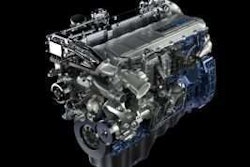Everybody wants the corner office, but when it comes to truck sales, the best way to get there is to not be in the office at all.
If you want to be a great salesperson, you have to get out there.
The way to do that is through outside sales calls, says George Papp, professional sales consultant and former director of sales development at Arrow Truck Sales.
Speaking at a past Used Truck Association’s “Selling for Success” training seminar, Papp says there are two types of outside sales calls in truck sales, pre-arranged visits and cold calls.
Each method requires its own strategy, but the ultimate goal of both is the same: To become someone a customer can trust and will buy trucks from.
To do that you must be prepared. Papp says it doesn’t take a natural-born gift to succeed in sales, but you can’t be lazy. It takes a lot of practice to be successful.
“Truck sales can be all that you want it to be,” he says. “You just have to take the initiative.”
Jim Ehrensperger, assistant manager of Arrow Truck Sales, Atlanta, says that being prepared is the key for any off-site visit.
“You have to do your research and know what types of equipment they need,” Ehrensperger says.
“If they only run day cabs and I show up there in a sleeper, it’s a waste of time.”
He said his research would often go as far as looking at Google Earth images to see what equipment a customer has.
To truly succeed in outside sales, Papp says you must understand the differences between pre-arranged calls and cold calls, and how those differences affect your call strategies. You can’t enter both with the same game plan.
Scheduled in advance, pre-arranged calls are visits to customers you’ve previously spoken with and have some relationship. They aren’t unknowns.
If you’ve done your homework, Papp says you should know when you enter a prospective customer’s facility that they’re qualified to buy, as well as their wants and needs. You should come with information (photos, informational packets, etc.) about the trucks you have available and the financing options they might require for purchasing.
Pulling up in the truck they like doesn’t hurt, either.
“That creates excitement throughout the business,” Papp says, adding that the truck can be used for more than just creating buzz. You can use the truck to sell the truck. Bring the potential buyer out to see the vehicle. Let them examine it and get up in the cab, he says. The sales process moves a lot faster when a buyer is sitting in a truck rather than looking at brochure.
Ehrensperger says that truck sitting on a customer’s property goes a long way in selling the truck.
“If you have the truck that they need sitting there on site, it makes a big difference,” he says. “There’s been many times that I have taken a truck with me to visit a potential customer and came back with a check in hand. Having the truck adds a lot of clout in the selling process.”
Papp says personality matters, too.
When on a pre-arranged call, salespeople should be comfortable and gregarious with a prospective customer. There should be a relationship from previous discussions, Papp says, and you should be constantly working to strengthen it during the meeting. That will help sell the customer on not just the truck but also you and your dealership’s complete offering.
A successful salesperson sells more than just a truck—they sell your entire business.
“There’s a big difference between someone who just wants to sell you something, and someone that wants to be your business partner for a long time,” Papp says.
He also advises to listen carefully when a customer is talking, but don’t be too quiet during a visit. Long periods of silence will make a customer uncomfortable.
The overall strategy is different with cold calls. Unlike pre-arranged visits, Papp says cold calls are not designed as selling opportunities. They are fact-finding missions.
Cold calls give you the chance to introduce yourself to a prospective customer, get information about their business and their truck needs.
Can a cold call visit morph into a selling opportunity? Sure, but Papp says a customer should always take a cold call in that direction, not a salesperson.
He says salespeople who treat cold calls like pre-arranged visits or immediately try to turn them into sales meetings get nowhere, and give cold calling an unfairly poor reputation.
“Cold calling is how you see it,” Papp says in his training brochure. “There is no magic script and while there are many helpful techniques and methods, there is no single answer.”
He recommends you be prompt, polite and direct during a cold call. Introduce yourself and ask if you can speak to the person in charge of truck purchasing. If they aren’t there, ask for their contact information and leave your business card, but don’t push the issue.
Being friendly goes a long way. “When you’re [rude] they’re going to treat you that way in return,” Papp says.
He says the goal should be to lay the groundwork for another conversation, and eventually a pre-arranged call.
“Cold calling makes things happen,” Papp says. It’s the first step in finding a new customer.
And if you want that corner office, like pre-arranged calls, it’s something you have to do.








